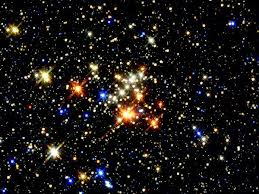Robert Krulwich reports over at NPR:
Science writer David Blatner, in his new book Spectrums, says a group of researchers at the University of Hawaii, being well-versed in all things beachy, tried to calculate the number of grains of sand.
They said, if you assume a grain of sand has an average size and you calculate how many grains are in a teaspoon and then multiply by all the beaches and deserts in the world, the Earth has roughly (and we’re speaking very roughly here) 7.5 x 1018grains of sand, or seven quintillion, five hundred quadrillion grains.
That’s a lot of grains.
OK, so how about stars? Well, to my amazement, it turns out that when you look up, even on a clear and starry night, you won’t see very many stars. Blatner says the number is a low, low “several thousand,” which gives the sand grain folks a landslide victory. But we’re not limiting ourselves to what an ordinary stargazer can see.
Our stargazer gets a Hubble telescope and a calculator, so now we can count distant galaxies, faint stars, red dwarfs, everything we’ve ever recorded in the sky, and boom! Now the population of stars jumps enormously, to 70 thousand million, million, million stars in the observable universe (a 2003 estimate), so that we’ve got multiple stars for every grain of sand — which means, sorry, grains, you are nowhere near as numerous as the stars.

Comments are closed.